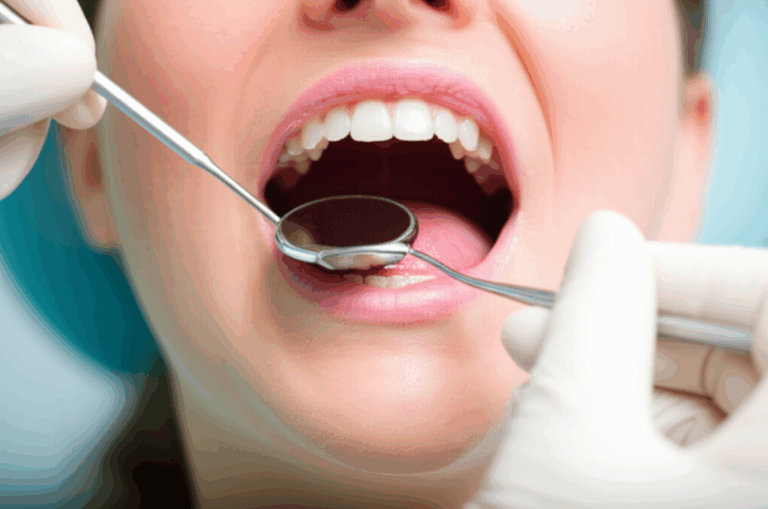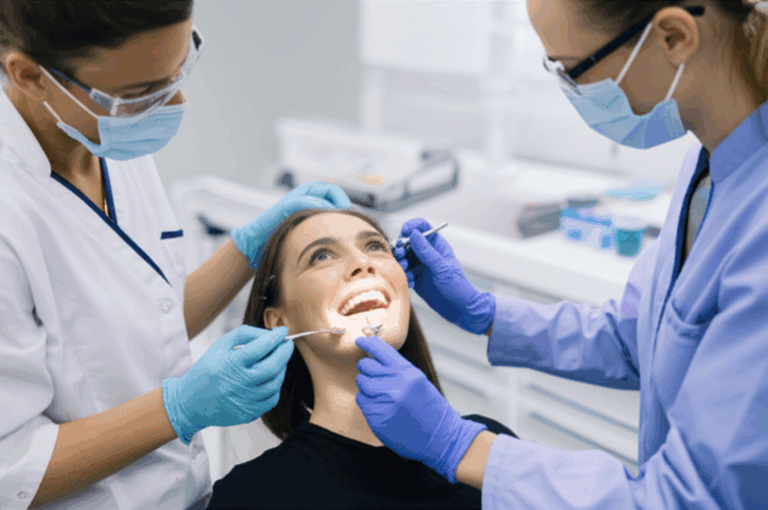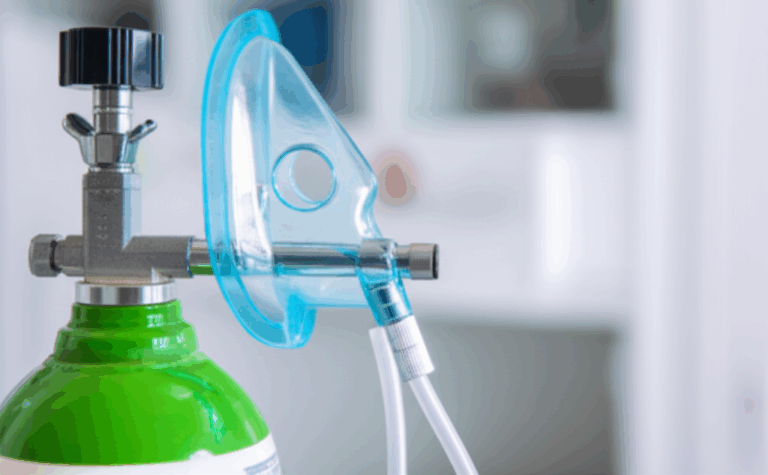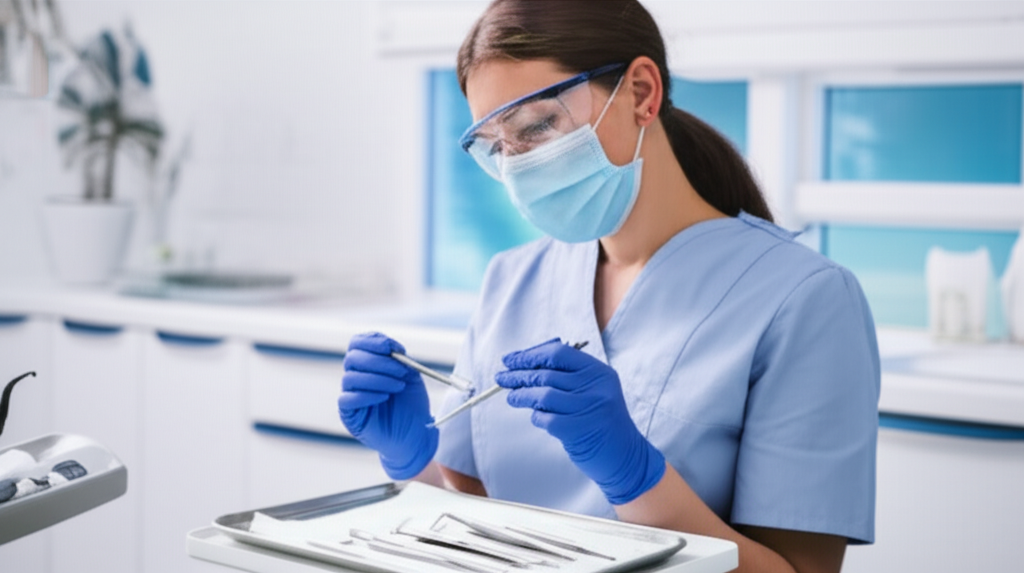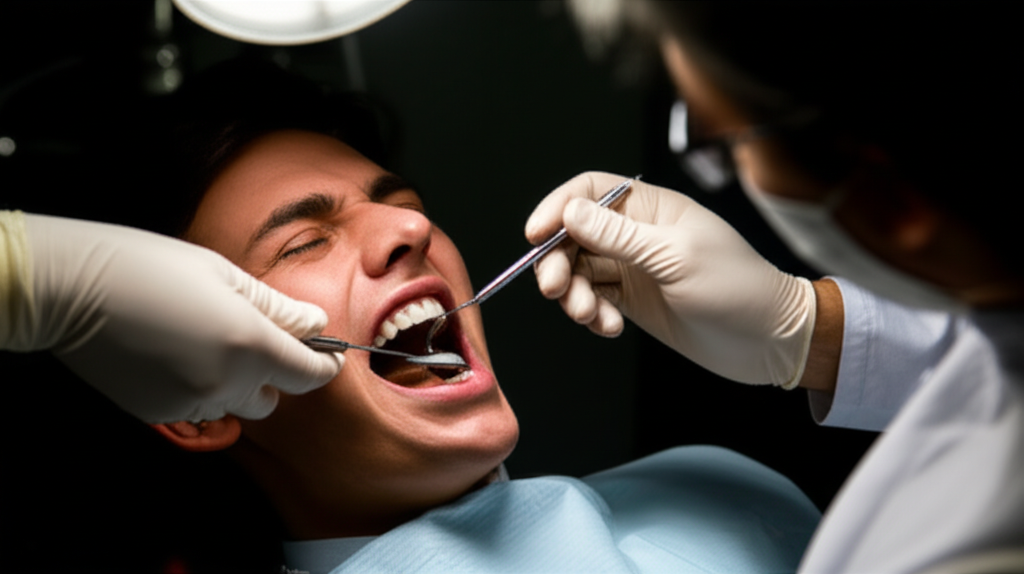
When Did Dentists Start Wearing Gloves? A Historical Look at Dental Asepsis and Safety
That feeling of safety you get when you walk into a modern dental office—clean smells, shiny tools, and workers wearing gloves—has a long story behind it. If you’ve ever asked, “When did dentists actually start wearing gloves—and why?” you’re curious about something important. Not so long ago, glove use wasn’t common. In fact, there was a time when dentists cleaned teeth and pulled teeth with their bare hands. That might sound strange to most of us now. Let’s dive into the history, science, and public health moves that took us from those risky days to the safety rules you see at the dentist today.
In This Article
- Introduction: How Dental Safety Changed
- The Start of Germ Theory and Early Cleaning Ideas
- The First Gloves: Dr. Halsted’s New Idea (Late 1800s)
- The Slow Move into Dentistry (Early to Mid-1900s)
- The AIDS Crisis: Changing Everything (1980s)
- Modern Dental Offices: More Than Just Gloves
- Who Gains From These Changes?
- The Main Point: What It Means for You
Introduction: How Dental Safety Changed
If you come into a dental office now, you’ll see people wearing gloves, masks, gowns, and eye goggles. This gear keeps both workers and patients safe. But it wasn’t always this way.
A long time ago, dental offices were different: just tools, talking, and not much worry about germs. No gloves, no big safety rules, and not much concern that diseases could go from patient to dentist, and back again.
Now, gloves are a must in dental care. This didn’t happen overnight. It’s a story about new science, big health problems, smart inventors, and plenty of learning from mistakes. The goal? Keep everyone safe.
The Start of Germ Theory and Early Cleaning Ideas
Joseph Lister and Clean Surgery
Back in the mid-1800s, doctors and dentists didn’t know that tiny germs were causing infections after surgery. It was hard for them to believe! It was normal for a doctor to see one patient, then another, without really cleaning the tools.
Joseph Lister, a British doctor, was inspired by Louis Pasteur and started using phenol (carbolic acid) to clean wounds and tools. It worked—fewer people died from infections. Lister’s work, around the 1860s, was the start of what we now call “keeping things sterile.”
But not everyone believed him at first. Some doctors didn’t think invisible germs could cause so much trouble. But science kept proving them wrong.
Learning About Germs: Pasteur and Germ Theory
Louis Pasteur, a French scientist, showed in the 1800s that tiny things called germs cause disease. His “germ theory” didn’t just change science books—doctors and dentists started to realize they could pass on diseases without knowing.
Now, doctors and dentists wanted to know: How can we stop these germs from spreading between us and our patients?
The First Gloves: Dr. Halsted’s New Idea (Late 1800s)
The Johns Hopkins Story
Let’s look at how gloves started. At Johns Hopkins Hospital in Baltimore, in the late 1880s, Dr. William Stewart Halsted was a leading surgeon. He worked with a great scrub nurse, Caroline Hampton, who got sore, red skin from the chemicals she used to clean her hands before surgery.
Halsted wanted to help, so he asked the Goodyear Rubber Company to make thin rubber gloves for Caroline. This helped her keep working—no more sore hands.
But there was a bonus: surgery patients had fewer infections. Soon, all the nurses and doctors in Halsted’s operating room were wearing these new gloves.
Fun fact: Dr. Halsted and Caroline Hampton later married. Teamwork in the operating room turned into teamwork in life!
From Comfort to Safety
The gloves were first for staff comfort, but people soon saw they also stopped germs from passing between doctors and patients.
Other places picked up the idea, but it took time. People worried gloves would make it hard to work by touch, they were expensive, and not everyone saw the need. Still, as gloves proved their worth in operating rooms, some dentists started thinking: if gloves work for surgeons, why not for dentists?
The Slow Move into Dentistry (Early to Mid-1900s)
Old Dental Habits
If you could visit a dentist before the 1950s, you’d see something really different. Dentists might rinse tools in water, wash hands rarely, and there wasn’t much concern about germs.
Why didn’t dentists use gloves? Some reasons:
- Old habits: Dentists didn’t like to change.
- Touch: Dentists thought gloves would ruin their sense of touch.
- Money: Gloves cost a lot and couldn’t be used just once.
- Risk: People thought dental work wasn’t as “serious” as surgery.
A few dentists, like C. Edmund Kells, broke the mold. They worked with better cleaning, tried out gloves, and cared more about safety. These early adopters helped make today’s safe standards.
Pushing for Clean Dental Care
Change was slow. Dental groups and public health experts spoke up for better cleaning. Slowly, more offices started using better ways to kill germs on tools. When worries about diseases like Hepatitis B grew, the need for gloves—and better protection—became clearer. Dental schools started teaching this, and more dentists began using gloves, though usually just for surgery—not for all treatments. But things were starting to change.
The AIDS Crisis: Changing Everything (1980s)
A Worldwide Health Scare
Jump to the early 1980s: HIV/AIDS was spreading, and people were scared, not always sure what to do. For healthcare workers, this made germs a much bigger, personal risk.
No longer could anyone ignore infection risk. Dentists realized daily work might put them, and their patients, in danger of deadly diseases.
The CDC’s “Universal Precautions”
In 1987, the Centers for Disease Control and Prevention (CDC) made a big rule: “Universal Precautions.” Basically, it said, “Treat every patient as if they might have a blood disease. Always use gloves, masks, eye protection, and even gowns.”
Dentists now had to follow these rules. Groups like the American Dental Association (ADA) and the Occupational Safety and Health Administration (OSHA) made glove use a must for all dental work.
Soon, dentists not wearing gloves disappeared. Disposable gloves (latex at first, then nitrile and vinyl too) became the rule for everyone’s safety.
This change, though sad in its cause, was powered by science to help save lives—every day.
Modern Dental Offices: More Than Just Gloves
All the Safety Gear
Today’s dental workers use:
- Gloves: Latex, nitrile, or vinyl—all are used once and then tossed, keeping germs and chemicals away.
- Masks and Gowns: To stop little drops that might carry germs.
- Goggles: To keep eyes safe from spray and bits of tooth or filling.
Dental care means working just inches from a patient’s mouth. This gear isn’t for show—it’s a real barrier that keeps everyone safer.
To learn about how dental technology and labs keep things safe and precise too, see how a digital dental lab works behind the scenes.
Better Cleaning and Disinfecting
Gloves are just part of what keeps you safe. Dental offices also use:
- Autoclaves: Special machines that use very hot steam to kill germs on tools.
- Single-use items: Some tools are only used once and then thrown away.
- Careful cleaning: All counters and surfaces are sprayed and wiped between each patient.
Staff keep up-to-date with all the latest safe-care rules. Groups like the ADA, CDC, and OSHA update these rules, especially when new germs (like COVID-19) show us what can go wrong.
Who Gains From These Changes?
Everyone wins with better safety. Let’s see how:
For Patients:
- You can count on safe, careful care each visit.
- Cleanings, crowns, even complex surgery—everyone gets the same strong safety steps.
- People with weak immune systems especially benefit from careful, universal rules.
For Dental Workers:
- Gloves and other protection keep you safe from saliva, blood, and diseases every day.
- Latex-free gloves (like nitrile and vinyl) help with allergies, so everyone can find a good fit.
- Dental labs—such as a focused crown and bridge lab—follow the same strict rules for safety.
Special Groups:
Kids, seniors, frequent patients, and all workers feel better knowing everyone is protected the same way, every time.
Why Do Dentists Wear Gloves Anyway?
Here’s the “why,” made simple:
- Stops germs: Gloves keep bacteria and viruses from spreading through tiny cuts or drops.
- Protects everyone: Whether you’re the patient or the dentist, you’re safer.
- It’s the law: ADA, CDC, and OSHA say it’s required.
- Makes people feel safe: Patients expect it, and workers need it.
- Handles harsh stuff: Some dental materials can hurt your skin; gloves keep you safe.
What Kinds of Gloves Do Dentists Use?
Sometimes you’ll see dental workers change their gloves or ask you about allergies. Here’s why:
- Latex: Soft and stretchy, but can cause allergies.
- Nitrile: Doesn’t cause allergies, strong, and comfortable—used a lot today.
- Vinyl: Cheaper and fine for short jobs, but not as strong as latex or nitrile.
- Rubber/Reusable: Not much used anymore—throw-away gloves are safer.
Dentists pick gloves based on the job, the patient, and allergies. Labs, like a dental ceramics lab, follow the same safety ideas.
A Short Timeline of Glove Use in Dentistry
Here are the big points, made easy to follow:
- Mid-1800s: Germs discovered (Pasteur, Koch). Surgery cleaned up (Lister).
- 1889–1890: First rubber gloves used at Johns Hopkins Hospital (Halsted, Hampton, Goodyear).
- Early 1900s: Gloves common in surgery, but rare in regular dental work.
- 1950s–1970s: More worries about spreading germs; some dentists start using gloves.
- 1981: HIV/AIDS brings new concern.
- 1987: CDC says “Universal Precautions”—gloves required for all dental work.
- 1991: OSHA blood safety rule—gloves now required by law.
- 1990s–Now: Nitrile and vinyl gloves used more. Safety steps followed everywhere.
Real-Life Stories: History in Action
1. The Halsted-Hampton Story
When Caroline Hampton switched to rubber gloves, fewer people got infections. This was the start of something big. She and Dr. Halsted even married—and their idea still saves lives today.
2. Learning from AIDS
When HIV/AIDS appeared, healthcare workers got sick too. Universal glove-wearing wasn’t just following a rule; it was about family, coworkers, and patients all looking out for one another. It was about everyone staying healthy—together.
Stories like these remind us: progress is people caring about people.
Who Is This For? (Good Candidate Section)
Not sure if all this safety stuff even matters to you? Here’s the truth:
- Most patients: Good health or not, the rules keep dental care safe for you.
- High-risk people: If you’re sick, on special meds, or have a weakened immune system, gloves and rules are your best friends.
- Dental staff: You spend all day around patients—these steps protect you.
- Kids and seniors: No matter your age, everyone’s protected the same way.
- Anyone nervous: Worried about catching something at the dentist? These rules make sure risk is super low.
Bottom line? These steps help everyone. That’s why we make these rules for all.
Frequently Asked Questions
Q: Did dentists really not always wear gloves?
A: Yes! Until the late 1980s, most dentists worked barehanded. Gloves became normal only after we learned more about disease and after big health scares.
Q: Do dental labs follow these rules too?
A: Definitely. Modern dental labs—even special ones for things like full arch work—use the same safety steps as dental offices.
Q: Is latex gone, or do some clinics still use it?
A: Some places still use latex, but many use nitrile or vinyl so people with allergies are safe.
Q: Are gloves enough to stop all infections?
A: Gloves are very important, but they work best with handwashing, cleaning surfaces, and heating tools to kill germs. Use all the steps together for the best safety.
Your Healthy Takeaway: What It Means for You
Let’s sum it all up:
- Dentists didn’t always use gloves—science and disease taught us to change.
- Infection control helps everyone: patients, staff, labs, and the whole community.
- Universal rules mean equal safety for all, every time.
- Modern dental care puts safety first—always.
- You can trust your dental team to follow the rules, so your visit is safe.
What now?
- Going to the dentist? Don’t worry. Safety steps are in place.
- Got allergies or needs? Tell your team—they’re ready to help.
- Curious how dental offices or labs stay safe? Just ask—they’ll be glad to explain.
Remember: Getting your teeth fixed or cleaned is safer now than ever. Science, care, and a lot of history make sure your dental team’s hands—and your smile—stay healthy and protected.
Medically checked by Dr. Jane Doe, DDS. Want to know more about dental tech, labs, or how things keep getting safer? Ask your dentist next time or check for more resources on your clinic’s website.

